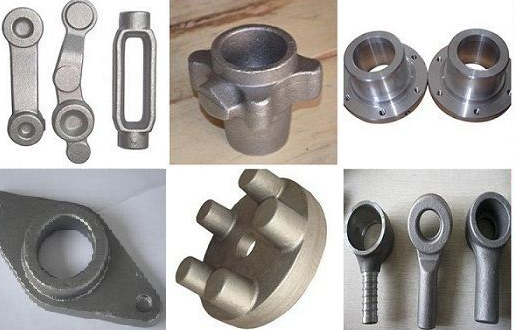The following phenomena sometimes occur in forging process.
1. The large grain size
Large grains are usually caused by high initial forging temperature and insufficient deformation, or high final forging temperature, or falling into the critical deformation zone. Aluminum alloy deformation degree is too large, forming texture; The deformation temperature of superalloy is too low, and the formation of asshole deformation structure may cause coarse grain. The plasticity and toughness of the forgings will be reduced and the fatigue property will be decreased obviously.
2. Uneven grain
Uneven grain means that the grain in some parts of the forging is very thick, but in some parts it is small. The main reason for the uneven grain formation is that the uneven deformation in different parts of the blank results in different degree of grain breakage, or the degree of deformation in the local area falls into the critical deformation area, or the local work hardening of the superalloy, or the local grain thickening during quenching. Heat resistant steel and superalloy are especially sensitive to grain unevenness. The non-uniform grain will decrease the durability and fatigue property of the forging.
3. Cold hardening phenomenon
During deformation, due to low temperature or too fast deformation speed, as well as too fast cooling after forging, the softening caused by recrystallization may not keep pace with the strengthening (hardening) caused by deformation, so that part of the cold deformation structure remains in the forging after hot forging. The presence of such tissue increases the strength and hardness of forgings, but decreases their plasticity and toughness. Severe hardening may cause forging cracking.
4.The crack
The crack is usually caused by the large tensile stress, shear stress or additional tensile stress in forging process by forging press. The place where the crack occurs is usually the place where the billet is most stressed and thinnest. If there are micro-cracks on the surface and inside of the billet, or structural defects in the billet, or the improper hot working temperature reduces the plasticity of the material, or the deformation speed is too fast and the deformation degree is too large, exceeding the plastic pointer allowed by the material, then cracks may occur in the process of roughening, drawing, punching, expanding, bending and extrusion Wen.
5,chap
The chap is a shallow turtle - shaped crack on the surface of the forging. This defect is most likely to occur on a surface that is under tensile stress during forging by forging press(for example, an unfilled bulge or a curved part). Cause the internal cause of cracking may be various: (1) raw materials with Cu, Sn and other fusible elements too much. (2) high temperature for a long time heating, steel surface copper precipitation, surface grain coarse, decarburization, or after multiple heating surface. Fuel sulfur content is too high, sulfur infiltration of steel surface.
